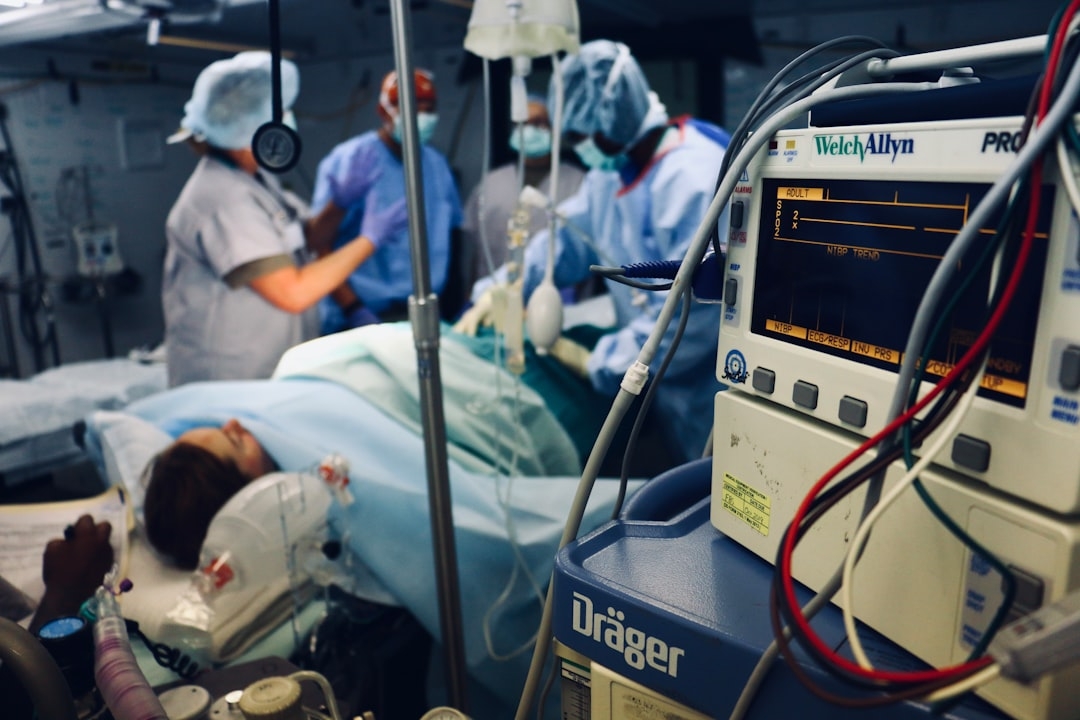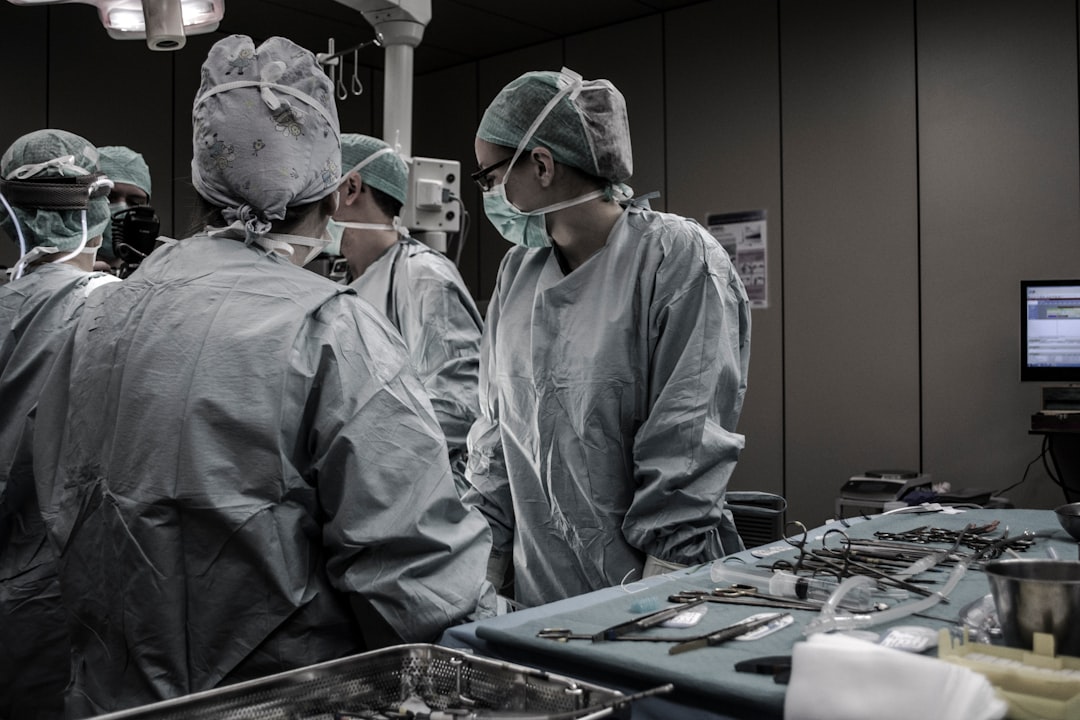Common Types of Surgical Errors
Surgical errors, though often unintentional, remain a significant concern in the field of healthcare. These errors can have profound consequences for patients, leading to complications, prolonged hospital stays, or even fatalities. Understanding the common types of surgical errors is crucial for both healthcare providers and patients to mitigate risks and enhance surgical safety.
One prevalent type of surgical error is wrong-site surgery. This occurs when a procedure is performed on the wrong part of the body. Despite protocols like marking the surgical site preoperatively, such errors still happen due to lapses in communication or oversight. Wrong-site surgery can lead to severe consequences including unnecessary removal of healthy organs and delayed treatment for the actual condition.
Another common error is retained surgical instruments and sponges. During an operation, various tools are used to perform intricate tasks. In some unfortunate cases, these instruments are accidentally left inside a patient's body cavity. This oversight can result in infections, internal injuries, and additional surgeries to retrieve the foreign objects.
Anesthesia-related mistakes also represent a significant portion of surgical errors. Administering too much or too little anesthesia can have dangerous effects on patients. Overdoses may lead to prolonged sedation or respiratory issues, while underdosing might result in intraoperative awareness where patients experience pain but cannot communicate it due to paralysis from muscle relaxants.
Incorrect incisions constitute another category of surgical mishaps. Surgeons might make an incision at an incorrect location or extend it beyond what is necessary. Such errors not only complicate the primary surgery but also increase recovery time and heighten the risk of infection.
Medication errors during surgery are also noteworthy. Patients undergoing operations typically receive various medications including antibiotics and anticoagulants. Errors in dosing or administering incorrect medications can lead to adverse reactions or inadequate therapeutic effects during critical phases of surgery.
Lastly, nerve damage during surgery is another serious error that occurs when surgeons inadvertently injure nerves while performing procedures near delicate structures like spinal columns or vital organs. Nerve damage might lead to permanent loss of function or chronic pain post-operation.
In conclusion, common types of surgical errors include wrong-site surgeries, retained instruments, anesthesia mistakes, incorrect incisions, medication errors, and nerve damage. Each type presents unique challenges and potential harms that necessitate vigilant practices by healthcare professionals to prevent them. Continuous education on best practices coupled with rigorous adherence to established protocols can significantly reduce these risks-ultimately ensuring safer outcomes for patients undergoing surgery.
Causes and Contributing Factors
Surgical errors, although relatively rare, are among the most alarming types of medical mistakes due to their potential to cause significant harm to patients. Understanding the causes and contributing factors behind surgical errors is crucial for enhancing patient safety and improving healthcare outcomes.
One primary cause of surgical errors is communication breakdowns. In the high-stakes environment of an operating room, clear and effective communication among the surgical team is essential. Miscommunication can occur at multiple points: during preoperative planning, in the transfer of patient information, or even amidst intraoperative procedures. For example, a surgeon may misinterpret a nurse's instruction or a critical piece of patient history might not be relayed accurately. These lapses can lead to grave mistakes such as wrong-site surgeries or incorrect procedures being performed.
Another significant contributing factor is inadequate preoperative planning. Surgical teams must meticulously prepare before entering the operating room by reviewing patient histories, understanding the specific nuances of each case, and ensuring all necessary equipment is available and functional. Failure in any aspect of this preparation phase can increase the likelihood of errors occurring. For instance, if a crucial instrument is missing or malfunctioning during surgery, it could force improvisational decisions that heighten risk.
Fatigue and human error also play substantial roles in surgical mishaps. Surgeons often work long hours under intense pressure, which can lead to decreased cognitive function and impaired judgment-a phenomenon known as "decision fatigue." Prolonged shifts without adequate rest have been linked to increased error rates across various medical disciplines but are particularly perilous in surgery where precision is paramount.
Systemic issues within healthcare institutions can further exacerbate these problems. Understaffing means that surgical teams may be overworked and rushed through procedures without sufficient time for thorough checks and balances. Additionally, outdated or poorly maintained equipment can fail at critical moments despite a team's best efforts.
The complexity of modern surgeries also cannot be overlooked as a contributing factor. As medical technology advances and allows for increasingly intricate procedures, the margin for error narrows significantly. Surgeons must navigate sophisticated machinery while simultaneously making split-second decisions-an environment ripe for potential mistakes if not managed with utmost care.
Lastly, insufficient training and experience contribute notably to surgical errors. Newer surgeons or those who have not specialized adequately may lack the nuanced skills required for particular operations. Continuous professional development and regular simulation training are vital measures to ensure that all members of a surgical team remain proficient in current best practices.
In conclusion, surgical errors stem from a web of interrelated causes including communication breakdowns, inadequate preparation, fatigue, systemic institutional issues, procedural complexity, and insufficient training. Addressing these factors requires comprehensive strategies involving improved communication protocols, rigorous preoperative planning processes, better working conditions for medical staff, regular equipment maintenance checks, ongoing professional education programs, and robust institutional support systems aimed at fostering an environment where patient safety remains paramount at all times.
Impact on Patients and Healthcare Providers
Surgical errors, a grave concern in the healthcare sector, exert profound impacts on both patients and healthcare providers. These mistakes, ranging from wrong-site surgeries to retained surgical instruments, can lead to severe physical, emotional, and financial repercussions.
For patients, the consequences of surgical errors are often life-altering. Physically, a botched surgery can result in additional operations to correct the mistake, prolonged recovery periods, or even permanent disability. The emotional toll is equally significant; patients may experience anxiety, depression, and a loss of trust in medical professionals. Financially, the burden can be overwhelming. Additional medical bills for corrective procedures and extended hospital stays can lead to financial strain or ruin for many families.
Healthcare providers are not immune to the impact of surgical errors either. For surgeons and medical staff involved in such incidents, the professional fallout can be devastating. There is often an immediate drop in confidence and an increase in stress levels as they grapple with the knowledge that their actions have harmed a patient. This psychological burden can lead to burnout and even career changes as professionals seek to escape the pressures of their roles.
Moreover, surgical errors also affect healthcare institutions at large. Hospitals may face legal consequences including lawsuits which can be costly and damaging to their reputations. These incidents often spur changes in policies and procedures aimed at preventing future mistakes but also create an environment where medical staff may feel scrutinized or undervalued.
The ripple effect of surgical errors highlights the need for robust systems designed to minimize these occurrences-such as improved training programs for surgeons, enhanced communication among operating room teams, and rigorous adherence to safety protocols. By addressing these issues holistically, we not only protect patients but also support healthcare providers who strive daily to deliver safe and effective care.
In conclusion, while surgical errors undeniably cast a long shadow over both patients and healthcare providers, recognizing their multifaceted impacts is crucial for fostering a culture of safety within hospitals. Through concerted efforts towards prevention and support mechanisms post-incident, we can mitigate these adverse effects and work towards a more resilient healthcare system.
Prevention Strategies and Best Practices
Prevention Strategies and Best Practices for Surgical Errors
Surgical errors, though relatively rare, can have devastating consequences for patients and healthcare providers alike. These errors can range from wrong-site surgeries to retained surgical instruments, each posing significant risks to patient safety. The prevention of such mishaps is paramount in ensuring the highest standards of care within surgical settings. Implementing robust prevention strategies and best practices is essential to mitigate these risks and improve overall surgical outcomes.
One of the foremost strategies in preventing surgical errors is the adoption of standardized checklists. The World Health Organization (WHO) Surgical Safety Checklist, for instance, has become a cornerstone in many operating rooms worldwide. This checklist serves as a systematic guide for preoperative, intraoperative, and postoperative stages, ensuring that all critical steps are addressed before proceeding with surgery. By fostering a culture of thoroughness and accountability, checklists significantly reduce the likelihood of oversights that could lead to errors.
Effective communication among the surgical team is another critical factor in minimizing surgical errors. Miscommunication or lack of communication can lead to misunderstandings regarding patient information, surgical plans, or specific procedural details. Implementing structured communication protocols such as preoperative briefings and postoperative debriefings helps ensure that every team member is on the same page. These sessions provide an opportunity to discuss any potential concerns or discrepancies before they escalate into serious issues.
Training and continuing education also play vital roles in preventing surgical errors. Surgeons, nurses, anesthesiologists, and all members of the operating room staff must undergo rigorous training not only in their specific fields but also in teamwork and crisis management skills. Simulation-based training programs offer practical experience without risk to patients and help build confidence among team members when dealing with unexpected situations during actual surgeries.
Technological advancements have also made significant contributions toward reducing surgical errors. The integration of computer-assisted surgical systems, real-time imaging technologies like intraoperative MRI or CT scans, and advanced monitoring equipment provides surgeons with enhanced precision and control during procedures. These tools act as additional safeguards against potential mistakes by offering clearer visualization and real-time feedback.
Another best practice involves stringent adherence to aseptic techniques to prevent infections-a common source of postoperative complications that can sometimes be attributed to lapses during surgery. Proper sterilization protocols for instruments and maintaining a sterile field are fundamental components of this strategy.
Furthermore, fostering a non-punitive environment where healthcare professionals feel comfortable reporting near-misses or minor incidents without fear of retribution encourages transparency and continuous improvement. Such an environment supports a proactive approach to identifying problem areas within the surgical process before they result in actual harm.
Lastly, patient involvement cannot be overlooked as part of effective prevention strategies against surgical errors. Encouraging patients to engage actively in their own care by asking questions about their procedures or verifying details like site markings can serve as an additional layer of safety.
In conclusion, preventing surgical errors requires a multifaceted approach encompassing standardized protocols like checklists, effective communication practices, comprehensive training programs, technological support systems, strict adherence to aseptic techniques, a supportive reporting culture, and active patient participation. By integrating these strategies into everyday practice within operating rooms across healthcare institutions globally we can continue striving towards minimizing risks associated with surgery thereby enhancing patient safety outcomes substantially.





